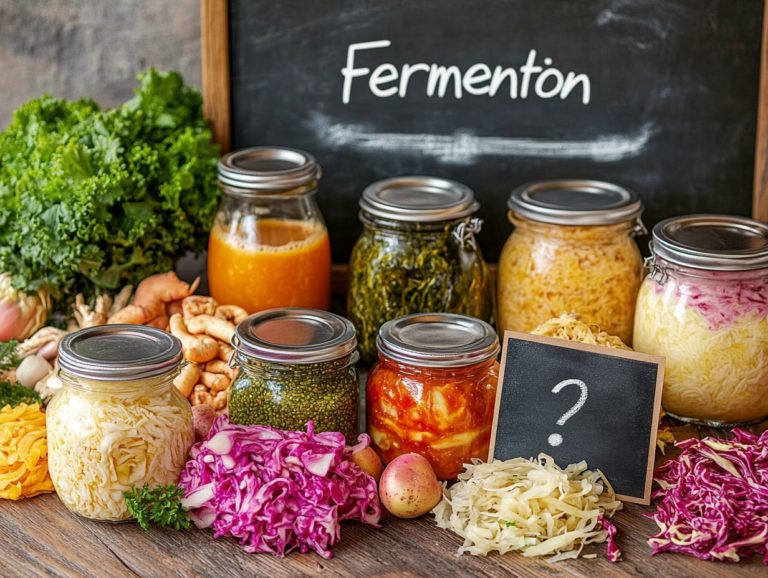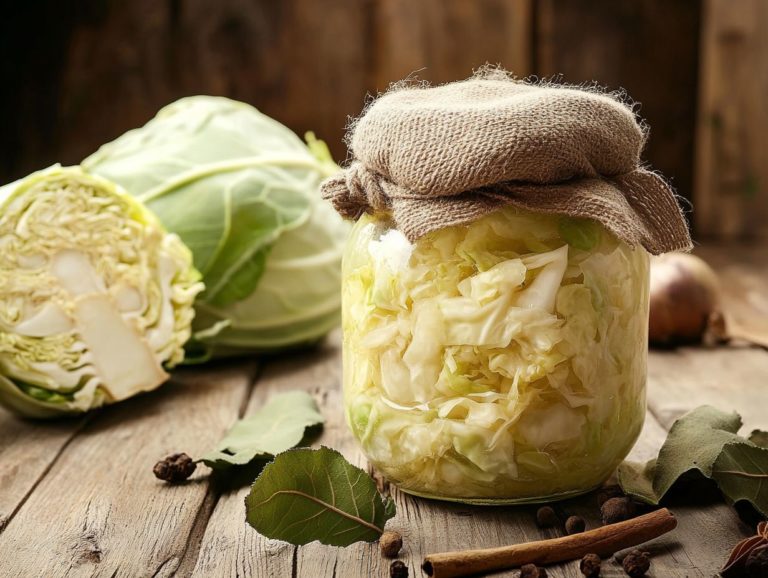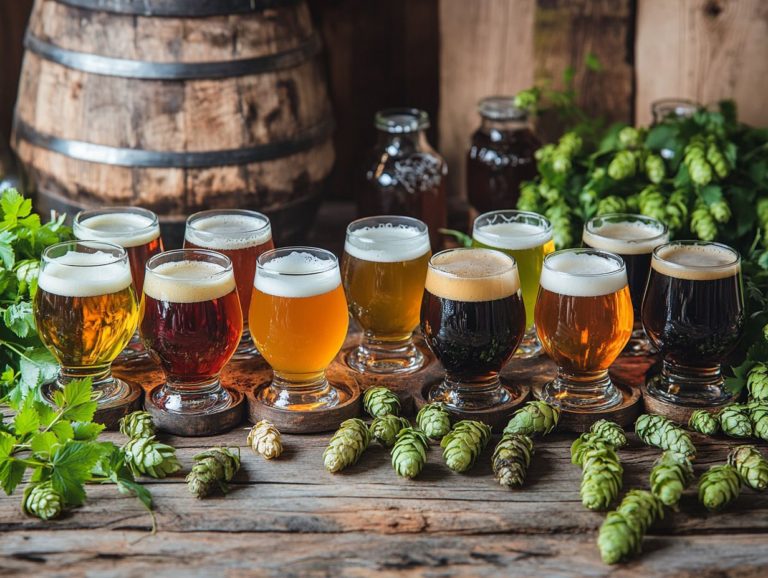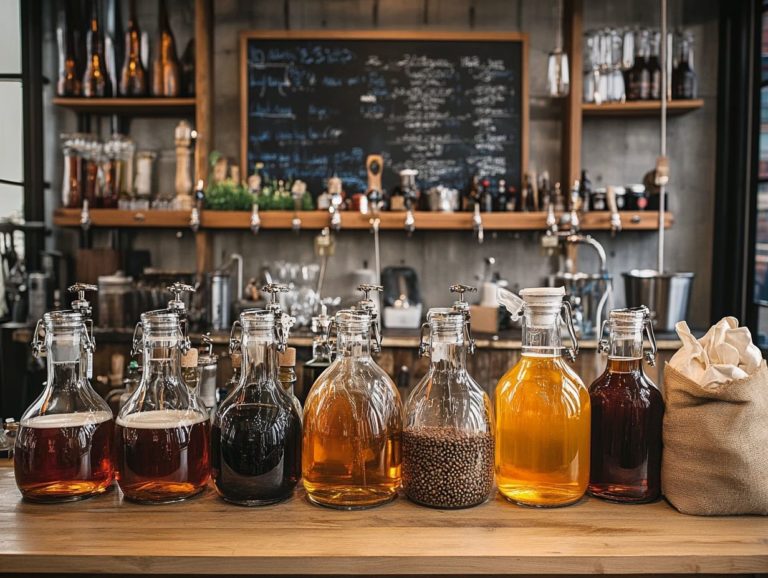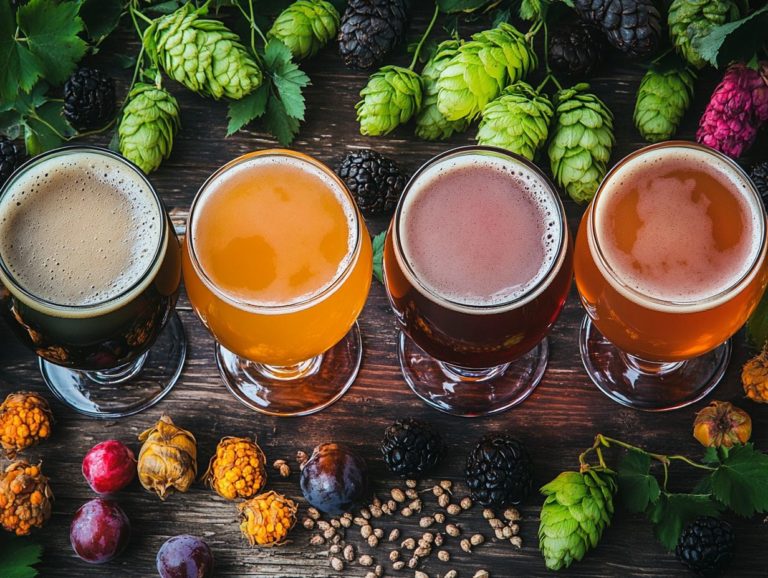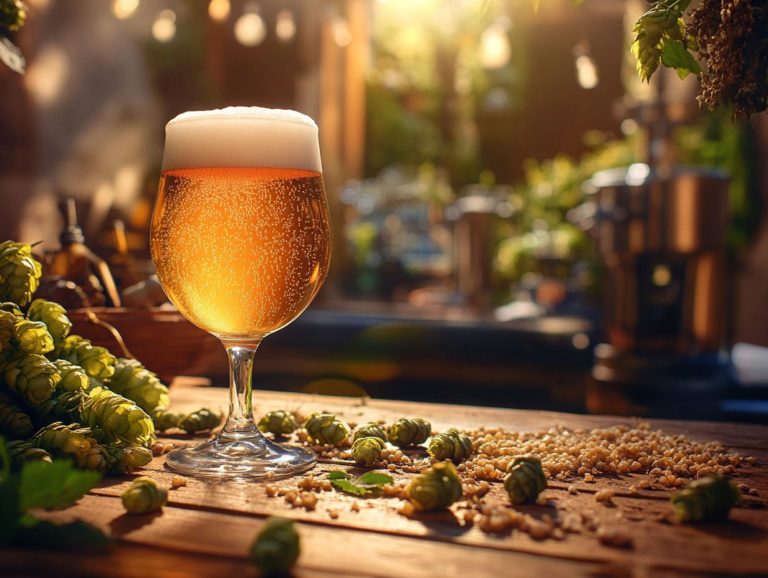Top 5 Yeasts for Successful Home Brewing Fermentation
Contents
- Ultimate Guide to Home Brewing Yeast
- Key Takeaways:
- 1. Saccharomyces Cerevisiae
- 2. Brettanomyces Lambicus
- 3. Pichia Anomala
- 4. Lactobacillus Brevis
- 5. Saccharomyces Pastorianus
- What Is Yeast and Why Is It Important in Home Brewing?
- What Are the Different Types of Yeast Used in Home Brewing?
- How Does Each Type of Yeast Affect the Flavor of the Beer?
- What Are the Ideal Conditions for Yeast to Thrive in During Fermentation?
- What Are the Common Mistakes to Avoid When Using Yeast in Home Brewing?
- How Can a Home Brewer Choose the Right Yeast for Their Beer?
- Frequently Asked Questions
- 1. What are the top 5 yeasts for successful home brewing fermentation?
- 2. Can I use any type of yeast for home brewing fermentation?
- 3. How do I choose the right yeast for my home brewing fermentation?
- 4. Are there substitute yeasts that can be used for home brewing fermentation?
- 5. Can I use more than one type of yeast for my home brewing fermentation?
- 6. How important is the quality of yeast for successful home brewing fermentation?
Ultimate Guide to Home Brewing Yeast
When it comes to home brewing, the yeast you choose can truly make or break your beer. Get ready to elevate your home brewing game!
Understanding the different types of yeast not only enhances your brewing experience but also fine-tunes the flavors of your creations. You ll dive into the top five yeasts from Saccharomyces Cerevisiae to Lactobacillus Brevis and discover their unique characteristics, ideal fermentation conditions, and the common pitfalls to avoid. Whether it s ale, lager, or a hybrid strain like Kveik, the right selection is crucial.
Whether you re a seasoned brewer or just beginning your journey, this guide will empower you to select the perfect yeast for your next batch.
Key Takeaways:
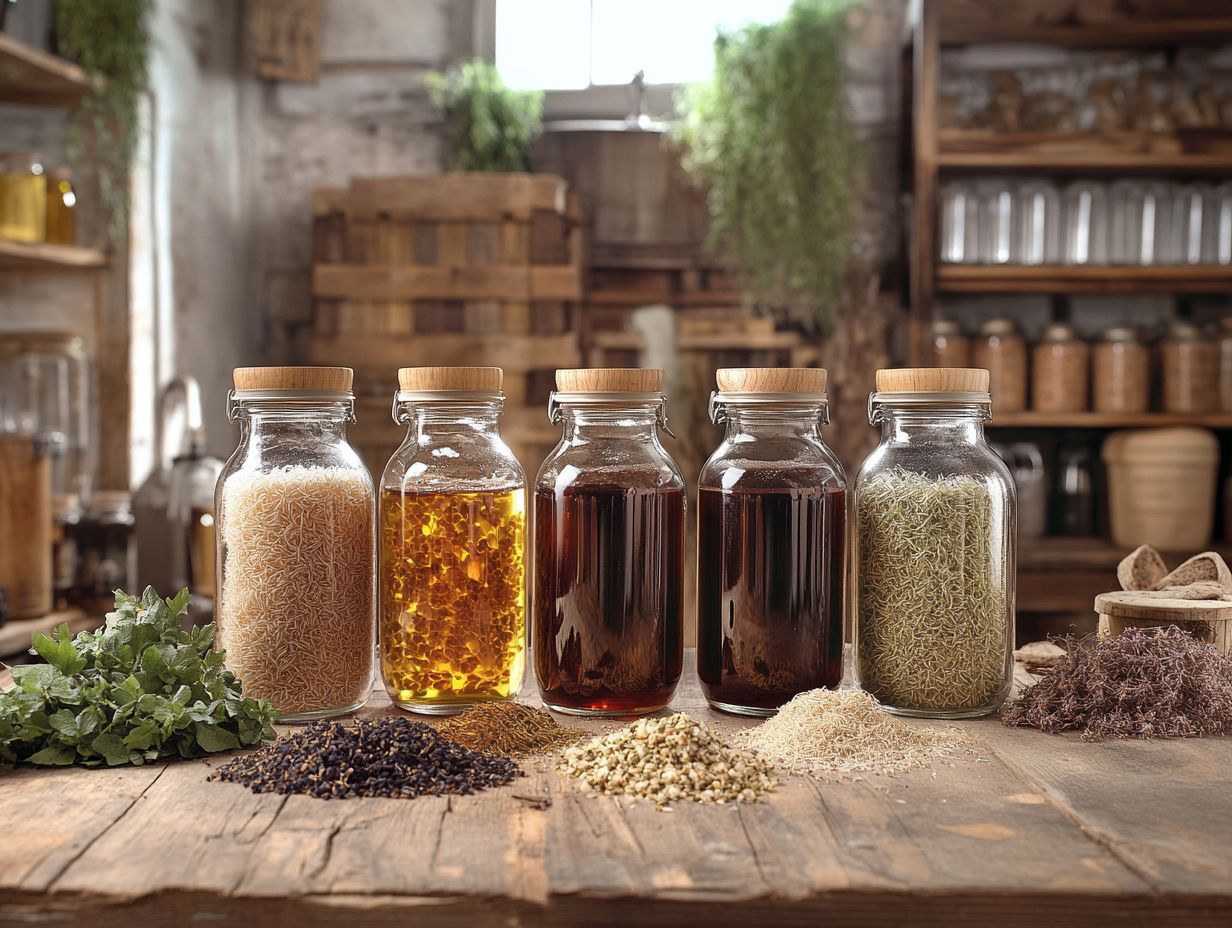
- Choose the right type of yeast for your home brewing based on the desired flavor profile and ideal fermentation conditions.
- Be mindful of common mistakes when using yeast in home brewing, such as using improper temperatures or neglecting proper sanitation and handling.
- Top 5 yeasts for successful home brewing fermentation include Saccharomyces Cerevisiae, Brettanomyces Lambicus, Pichia Anomala, Lactobacillus Brevis, and Saccharomyces Pastorianus. Don’t forget to explore other exciting strains such as Kveik.
1. Saccharomyces Cerevisiae
Saccharomyces Cerevisiae is the star of the brewing world, a yeast strain celebrated for its clean fermentation profile and impressive versatility across various brewing styles. If you re a homebrewer aspiring to craft exceptional beers with distinct flavors and unique characteristics, this yeast is your go-to choice.
This robust yeast excels at producing a wide array of flavor profiles, from vibrant fruity esters (flavor compounds) to delicate subtle phenolics. Its remarkable ability to thrive in various mashing processes means it can adapt seamlessly, enhancing the final product s aroma and taste.
During fermentation, Saccharomyces Cerevisiae works its magic by converting sugars into alcohol while releasing carbon dioxide, resulting in a beautifully balanced beverage. Its adaptability makes it perfect for a range of styles, including ales, stouts, and even lagers, solidifying its status as a cornerstone of both traditional and modern brewing practices.
The yeast’s unique interactions with malt and hops, as well as incorporating caramel and crystal malts, further elevate the complexity of your beer, underscoring its essential role in the brewing process.
2. Brettanomyces Lambicus
Brettanomyces Lambicus is a remarkable yeast strain, revered for its ability to impart complex sour flavors and distinctive esters. You ll often find it in the production of Belgian-style ales and farmhouse beers, where it elevates the flavor profile of various brews.
This wild yeast introduces a delightful funkiness that makes each beer not just intriguing but transforms every sip into a true exploration of taste. Its usage in crafting Belgian Tripels, Saison, and Weizen styles is particularly noteworthy. Its fermentation capabilities can create a rich spectrum of flavors, ranging from earthy to fruity, all dependent on environmental conditions and specific ingredients.
When you combine it with other yeast strains, you can achieve an exceptional fusion of flavor components, allowing for the craft of truly unique beer experiences. This versatility enables you to either enhance the traditional characteristics of Belgian styles or boldly experiment, pushing the boundaries of flavor and aroma to new heights.
3. Pichia Anomala
Pichia Anomala is a fascinating yeast strain that elevates the fermentation process by imparting delightful fruity flavors, particularly in beers inspired by tropical climates. This yeast lets you create innovative recipes that stand out.
This yeast creates a rich blend of flavors, often evoking the essence of ripe fruits like banana or tropical citrus. It s an exceptional choice for styles such as fruit-forward IPAs, Belgian-style ales, and even sour beers. As you experiment with various fermentation temperatures, you might discover that lower temperatures enhance the fruity notes, while higher temperatures can intensify esters, resulting in a more vibrant flavor experience.
By incorporating Pichia Anomala into your homebrewing endeavors, you unlock a realm of creative possibilities. It encourages you to think outside the box and develop distinct, flavorful brews that will undoubtedly stand out in a competitive market. For those in tropical countries like Florida, this yeast strain is particularly advantageous. Try Pichia Anomala in your next brew and discover its unique flavors!
4. Lactobacillus Brevis
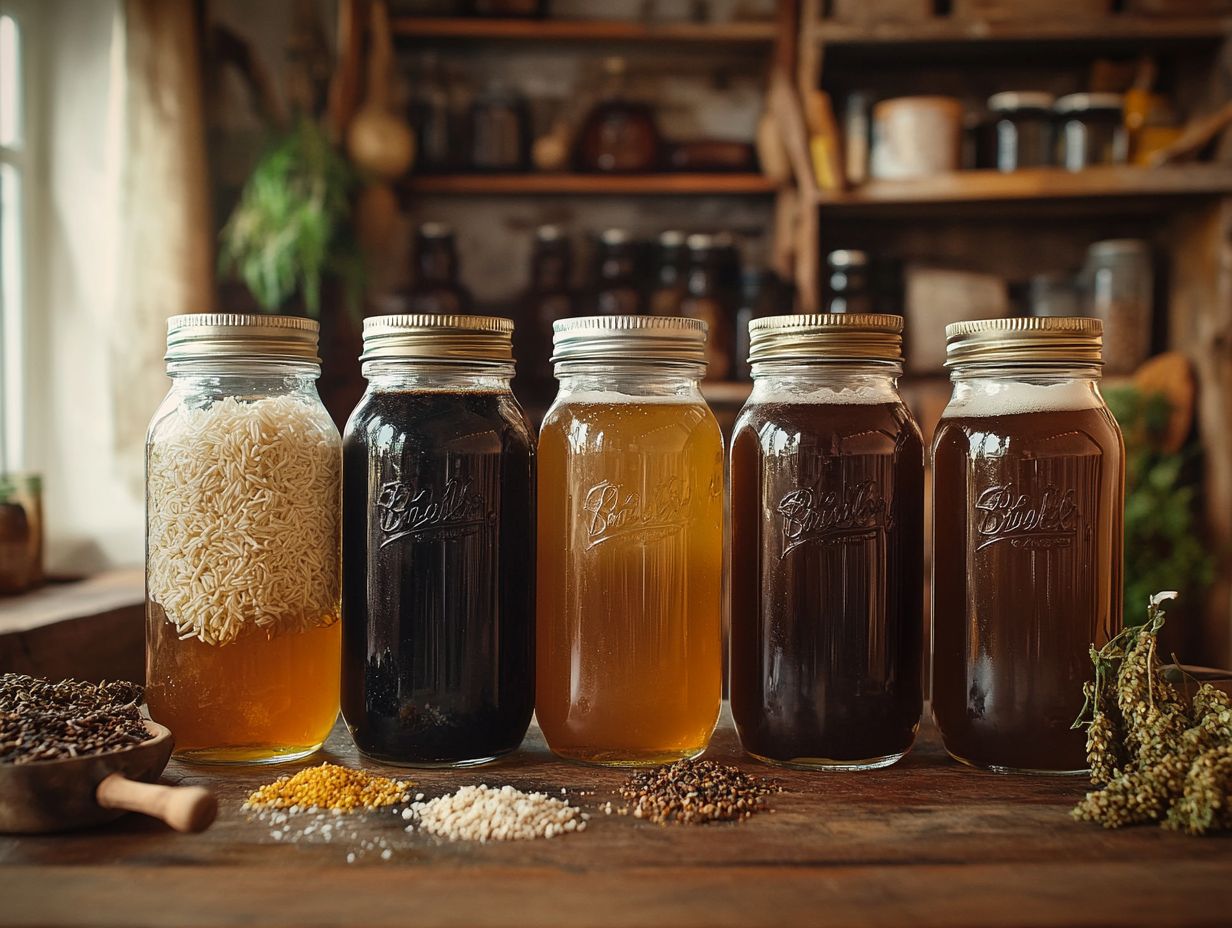
Lactobacillus Brevis is a standout lactic acid bacteria often found in the world of sour beer brewing. It s celebrated for its remarkable ability to impart a refreshing dryness while enhancing the overall complexity of your brew through its fermentation prowess.
This microorganism is essential to the souring process, contributing distinct flavors and aromas that define the final product. As it ferments, Lactobacillus Brevis produces lactic acid, which lowers the pH resulting in a delightfully tart profile and helps develop nuanced fruitiness and subtle floral notes.
The fermentation conditions, especially temperature, are critical. By maintaining a steady temperature within the ideal range, you can achieve a balanced sourness and an intricate flavor spectrum. Straying from these conditions can lead to unwanted flavors, emphasizing just how important precise temperature control is in crafting that perfect sour beer. Don t miss the chance to explore Lactobacillus Brevis in your next sour brew!
5. Saccharomyces Pastorianus
Saccharomyces Pastorianus is your premier yeast strain for lager production, thriving in cooler fermentation temperatures and delivering the clean, crisp flavors that define classic lager styles essential for any brewer who aspires to perfect their craft.
This remarkable yeast operates best at temperatures ranging from 45 to 55 degrees Fahrenheit, which is significantly cooler than its ale counterparts that prefer warmer conditions. By fermenting at these lower temperatures, you enjoy a longer fermentation period, resulting in exceptional flavor clarity and a smooth finish that distinctly sets lagers apart from ales. Temperature control is crucial in this process.
Unlike ale yeasts that tend to produce fruity or spicy notes, Saccharomyces Pastorianus enhances the malt profile while minimizing unwanted esters. Its versatility makes it a fantastic choice for a wide variety of lager styles, including pilsners, bocks, and M rzen, underscoring its crucial role in the art of brewing. Unlock your brewing potential today with Saccharomyces Pastorianus!
What Is Yeast and Why Is It Important in Home Brewing?
Yeast is an essential microorganism in your home brewing journey, playing a pivotal role in fermentation. It transforms the sugars from malt into alcohol and carbon dioxide, creating a delightful array of flavors and aromas that define the character of your beer. Whether you’re brewing beers or distilling spirits like bourbon or whiskey, yeast remains a critical component in your quest to craft a variety of beer styles.
The science behind yeast is fascinating, as it involves metabolic processes that convert simple sugars into alcohol and other byproducts. This transformation not only affects the ethanol content but also shapes the sensory characteristics of your final product. Different yeast strains offer a range of unique flavors, from fruity and floral notes to earthy and spicy undertones.
As a homebrewer, you have the opportunity to experiment with various yeast types such as ale, lager, or wild yeast to elevate your recipes and develop distinctive beer profiles that truly stand out. Be it American Ale, English Ale, or Belgian styles, the choices are plentiful.
By understanding the dynamics of fermentation, you can pair yeast strains with specific malts and hops, optimizing your brews and crafting beers that are sure to tantalize the palate. Each batch becomes a canvas for your creativity, allowing you to explore the endless possibilities that yeast brings to your brewing experience.
What Are the Different Types of Yeast Used in Home Brewing?
Numerous types of yeast are at your disposal for home brewing, each contributing unique characteristics to your final product. Widely used strains such as Saccharomyces cerevisiae are perfect for crafting ales, while Saccharomyces pastorianus is your go-to for lagers. If you re feeling adventurous, unique strains like Brettanomyces can impart delightful sourness and complexity.
Selecting the right yeast strain is paramount for achieving your desired flavor profile and aroma. These microorganisms do more than just ferment sugars; they also produce a variety of esters and phenols that can enhance or transform your beer’s characteristics. For instance, Belgian yeast strains are celebrated for their ability to bring forth fruity and spicy notes, making them an excellent choice for Belgian-style ales. On the other hand, if you re venturing into sour beer territory, strains like Lactobacillus or Pediococcus can introduce a tartness that s sure to excite adventurous palates. Experimenting with bread yeast can also yield surprising results in unique brews.
As a homebrewer, it s essential to consider the overall goal of your recipe and the flavors you wish to achieve when choosing your yeast. This decision can greatly influence the final taste and overall drinking experience, so choose wisely.
How Does Each Type of Yeast Affect the Flavor of the Beer?
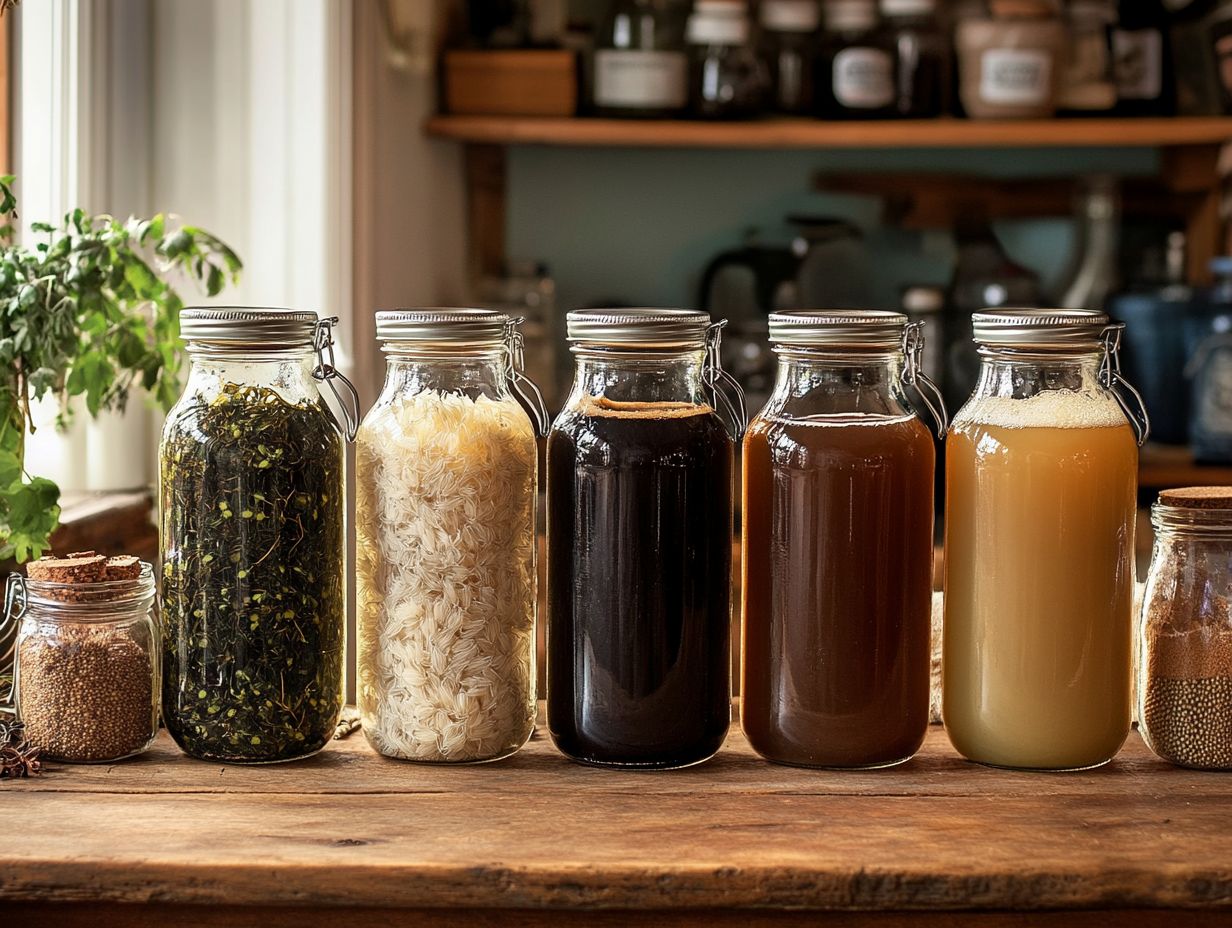
Each type of yeast plays a crucial role in shaping the flavor profile of your beer. Certain strains produce esters and phenols that elevate fruitiness and spiciness, while others maintain a clean character both essential for achieving your desired brewing outcome.
Take Belgian ale yeasts, for example, like Saccharomyces cerevisiae. They impart complex fruity flavors such as pear and banana, along with spicy phenolics that evoke the essence of clove. This dynamic interplay is vital for creating rich, flavorful brews that offer depth and warmth.
On the other hand, yeast strains commonly found in American IPAs, such as the renowned California Ale yeast, tend to ferment in a clean manner, allowing the hop characteristics to take center stage. This enables those delightful citrus and pine notes to truly shine.
By understanding these distinctive contributions, you can make informed decisions about which yeasts are best for home brewing for your specific style, ultimately enhancing the overall experience and enjoyment of each beer you brew.
What Are the Ideal Conditions for Yeast to Thrive in During Fermentation?
To achieve optimal fermentation, you need to provide specific conditions for the yeast, including the right temperatures, nutrient availability, and oxygen levels. These requirements can differ based on the yeast strain and the type of beer you re brewing.
Temperature control is paramount as different yeast strains thrive within distinct ranges. For instance, ale yeasts typically perform best between 65 F and 75 F. This range helps promote the fruity esters that enhance the beer’s aroma and flavor profile. On the flip side, lager yeasts prefer cooler temperatures, operating optimally around 45 F to 55 F. This results in a cleaner taste with fewer fruity notes. It s essential to maintain these temperatures throughout the fermentation process, as significant deviations can lead to off-flavors or even stalled fermentation.
By understanding these ideal conditions, you can fully harness the potential of your chosen yeast strains, ultimately crafting beers that are rich in complexity and character.
What Are the Common Mistakes to Avoid When Using Yeast in Home Brewing?
Home brewers often find themselves stumbling over common pitfalls with yeast. Some examples include mismanaging fermentation temperatures, neglecting sanitation which can lead to contamination and failing to pitch the appropriate amount of yeast. Each of these mistakes can dramatically impact the quality and flavor of your final brew.
These errors can also cause off-flavors, excessive esters, or even stalled fermentation, leaving you feeling frustrated and disappointed with your batches. To avoid these challenges, it’s essential to maintain consistent fermentation temperatures that align with the optimal range for your yeast strain, typically indicated on the packaging.
Establishing a rigorous sanitation routine will significantly reduce the risk of unwanted bacteria. Accurately measuring yeast quantities based on your beer’s density is crucial for ensuring a healthy fermentation process. By honing in on these key elements, you can elevate your brewing experience and craft exceptional beers that truly reflect the flavors you envision.
How Can a Home Brewer Choose the Right Yeast for Their Beer?
Choosing the right yeast is essential for you as a home brewer, as it plays a pivotal role in shaping the flavors and aromas of your beer. You’ll find a range of options, from classic strains perfect for ales and lagers to unique varieties that bring forth complex, fruity profiles tailored for various beer styles.
When selecting your yeast, consider several key factors. Think about the specific beer style you wish to create, the optimal fermentation temperature for yeast activity, and the distinct flavor profiles that various strains can impart. For example, if you opt for lager yeast, you’ll want to keep those fermentation temperatures cooler, resulting in clean and crisp flavors. On the other hand, ale yeast flourishes in warmer conditions, contributing fruity esters and phenolic compounds that enhance the character of your brew. Additionally, investing in the 5 best fermenters for home brewers can greatly improve your fermentation process.
The choice of yeast can significantly transform how your final product is tasted and perceived. This decision is not merely a technical aspect of brewing; it is an art form that profoundly shapes your beer experience.
Frequently Asked Questions
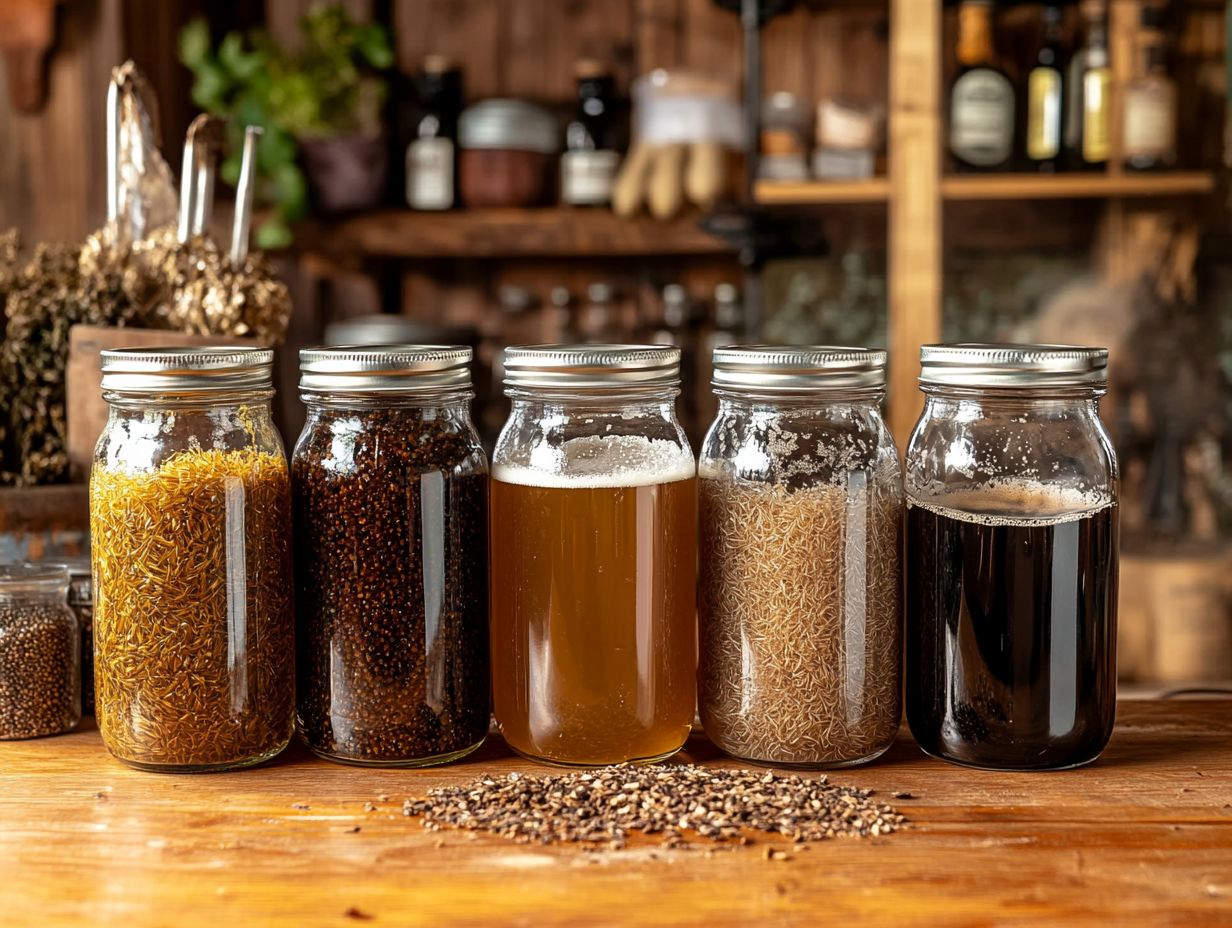
1. What are the top 5 yeasts for successful home brewing fermentation?
The top 5 yeasts for successful home brewing fermentation are Safale US-05, White Labs WLP001 California Ale Yeast, Wyeast 1056 American Ale, Nottingham Ale Yeast, and Safale S-04.
2. Can I use any type of yeast for home brewing fermentation?
No, not all yeasts are suitable for home brewing fermentation. It is important to use specific types of yeast that are designed for brewing, such as ale yeasts or lager yeasts.
3. How do I choose the right yeast for my home brewing fermentation?
The right yeast for your home brewing fermentation will depend on the type of beer you are brewing and the flavors you want to achieve. Some yeasts are better for certain styles of beer, so it is important to do your research and choose one that fits your desired outcome.
Start experimenting with different yeast strains today to discover your perfect brew!
4. Are there substitute yeasts that can be used for home brewing fermentation?
Yes, you can use different yeasts for home brewing, such as Kveik yeast, Belgian yeasts, and wild yeasts. The top five yeasts listed are the most reliable for successful fermentation.
5. Can I use more than one type of yeast for my home brewing fermentation?
Some brewers experiment with multiple yeasts in their brewing process. This can create exciting and complex flavors in the final product!
6. How important is the quality of yeast for successful home brewing fermentation?
The quality of yeast is vital for successful fermentation. Fresh, healthy yeast ensures a faster, more efficient process and better-tasting beer.

